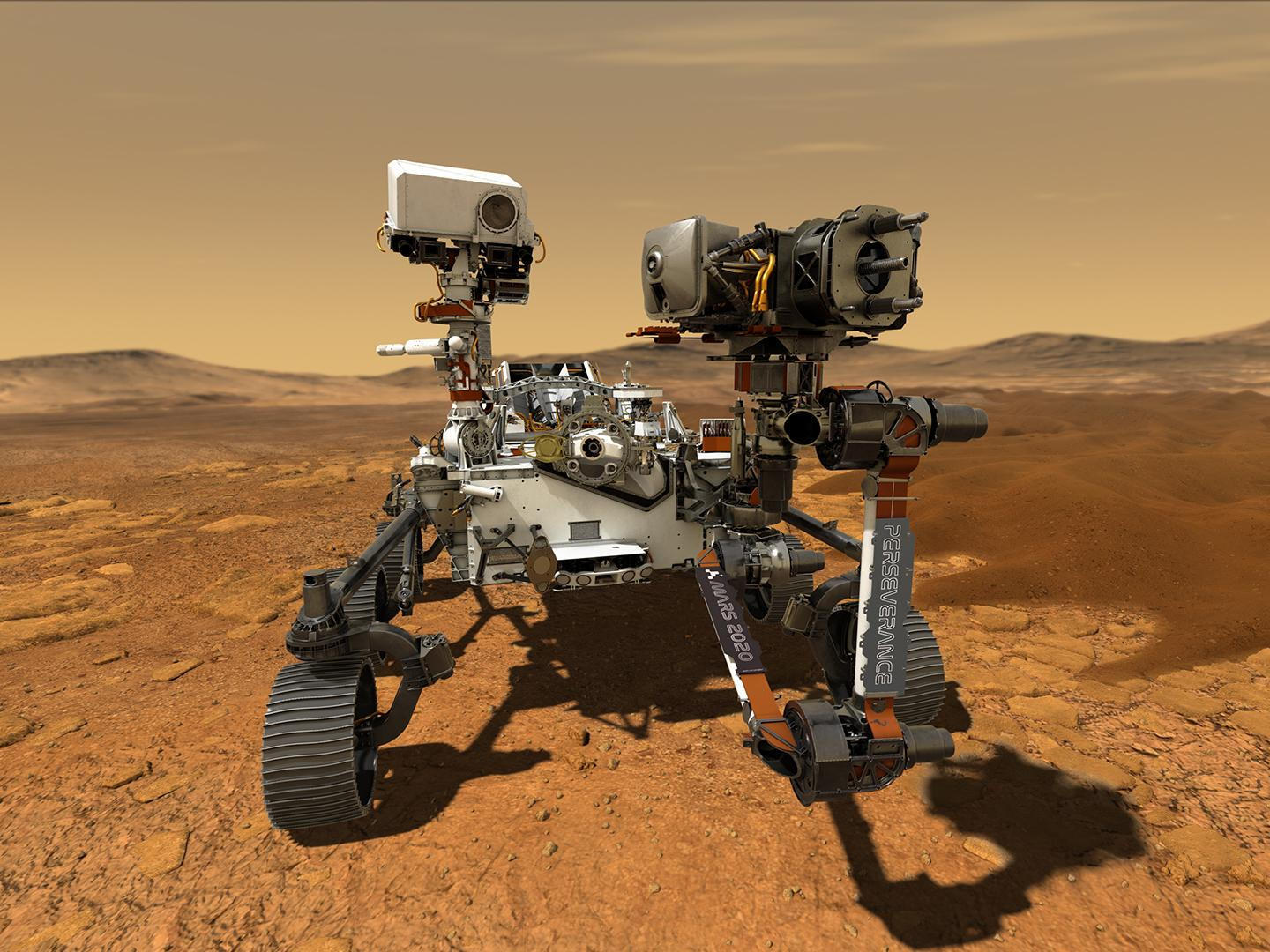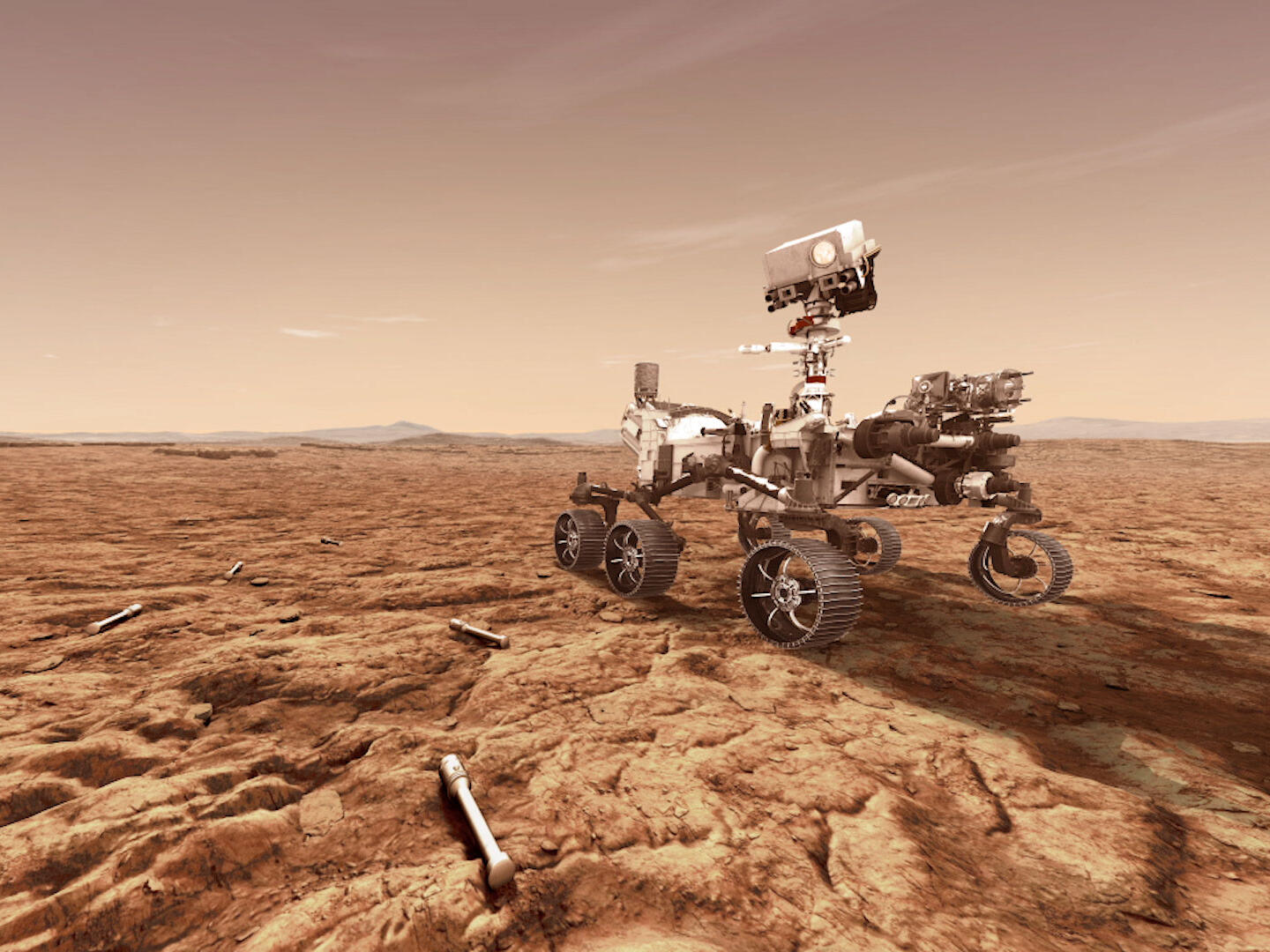Neil Armstrong's first lunar sample collection took three minutes and 35 seconds. Let's just say Percy is taking a slow and steady pace with its first attempt.

Image: NASA
As we await the first human missions to Mars, the robotic population roving and orbiting the Red Planet has been on the rise as of late. Earlier this year, NASA's latest rover, Perseverance, landed on our cosmic neighbor, joining a litany of other probes (active and otherwise) occupying the planet's dusty crimson confines, as space agencies iron out the challenges associated with sending humans to a planet known for extreme temperatures, minimal atmospheric protection and the occasional global dust storm.
On Wednesday, NASA announced that Percy was set to take its first sample on the Martian to unravel the mysteries about the planet's formation and sift for signs of ancient microbial inhabitants.
"When Neil Armstrong took the first sample from the Sea of Tranquility 52 years ago, he began a process that would rewrite what humanity knew about the Moon," said Thomas Zurbuchen, associate administrator for science at NASA headquarters in a release. "I have every expectation that Perseverance's first sample from Jezero Crater, and those that come after, will do the same for Mars. We are on the threshold of a new era of planetary science and discovery."
Perseverance rover's first sample
In a press release, NASA said the agency is making "final preparations" for its "six-wheeled geologist" ahead of this initial sample collection, estimating that this mission would begin "within the next two weeks." While the bots may be paving a path for human exploration, Perseverance operates at a particularly slow and steady pace compared to other human astronauts.
According to NASA, Neil Armstrong's first lunar sample collection took three minutes and 35 seconds; Perseverance, on the other hand, "will require about 11 days" to accomplish this objective on Mars, explaining some of the logistical delays associated with the robotic collection method such as the bot receiving "its instructions from hundreds of millions of miles away."
SEE: Hiring Kit: Video Game Designer (TechRepublic Premium)
The multiday sampling event requires no shortage of preparation objectives ahead of the initial collection. To start the "sampling sequence" process, the rover first places "everything necessary for sampling within reach" of its onboard robotic arm and then conducts "an imagery survey," per NASA. This helps the team on Earth "determine the exact location for taking the first sample and a separate target site in the same area for 'proximity science.'"
"The idea is to get valuable data on the rock we are about to sample by finding its geologic twin and performing detailed in-situ analysis," said science campaign co-lead Vivian Sun, from NASA's Jet Propulsion Laboratory in Southern California. "On the geologic double, first we use an abrading bit to scrape off the top layers of rock and dust to expose fresh, unweathered surfaces, blow it clean with our Gas Dust Removal Tool, and then get up close and personal with our turret-mounted proximity science instruments SHERLOC, PIXL, and WATSON."

Image: NASA/JPL-Caltech
In tandem, a suite of instruments will analyze materials on site. Once this "pre-coring science" has been completed, Sun explained that rover tasks will be limited for a full Martian sol to "allow the rover to fully charge its battery for the events of the following day." Once the sample tubes have been prepped, the rover next drills into the previously studied "geologic twin," and fills the tube "with a core sample roughly the size of a piece of chalk," according to NASA.
This tube is eventually stored in the rover's Adaptive Caching Assembly to be "measured for volume, photographed, hermetically sealed, and stored," the release said, noting that when these contents are next seen, "they will be in a clean room facility on Earth" to be analyzed by equipment that is "much too large to send to Mars."
SEE: The CIO's guide to quantum computing (free PDF) (TechRepublic)
Onboard, Percy boasts 43 tubes, according to NASA, and as many as 38 of these could holster Martian material with the other five serving as "witness tubes." However, these various samples will focus on different mission objectives over the course of the mission.
"Not every sample Perseverance is collecting will be done in the quest for ancient life, and we don't expect this first sample to provide definitive proof one way or the other," said Perseverance project scientist Ken Farley, of Caltech, in a press release.
"While the rocks located in this geologic unit are not great time capsules for organics, we believe they have been around since the formation of Jezero Crater and incredibly valuable to fill gaps in our geologic understanding of this region – things we'll desperately need to know if we find life once existed on Mars," Farley continued.

Innovation Newsletter
Be in the know about smart cities, AI, Internet of Things, VR, AR, robotics, drones, autonomous driving, and more of the coolest tech innovations. Delivered Wednesdays and Fridays
Sign up todayAlso see
- Everything you need to know about Perseverance and the mission (TechRepublic)
- C++ programming language: How it became the foundation for everything, and what's next (free PDF) (TechRepublic)
- Video game career snapshot: Industry insights and jobs for IT pros (TechRepublic Premium)
- Technology that changed us: The 1970s, from Pong to Apollo (ZDNet)
- Tom Merritt's Top 5 series (TechRepublic on Flipboard)







 English (US) ·
English (US) ·